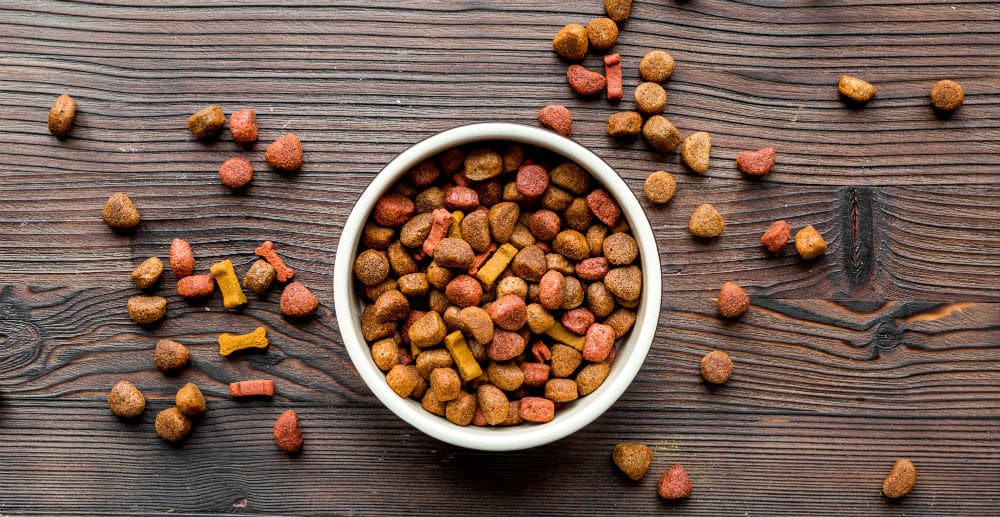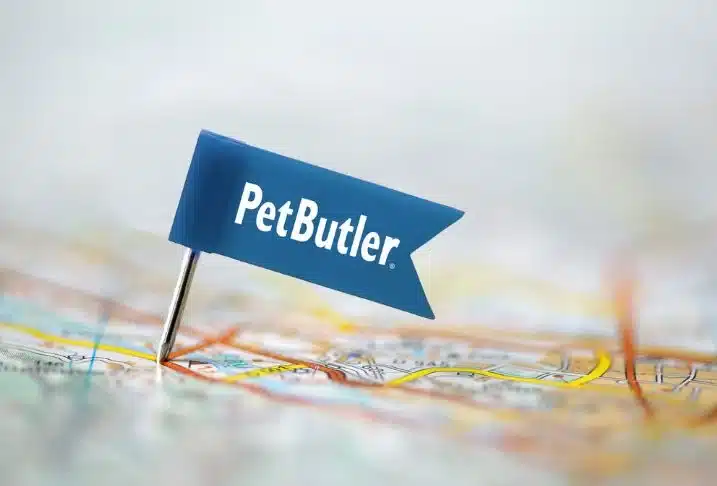Back in 1999 when I graduated veterinary school, there was just one semester course that covered the basics of animal nutrition from chicken to goat to horse to dog. Over the last several decades, the way pet professionals and owners have come to think about nutrition has vastly changed.
Boutique pet foods are all the rage as we look into healthy pet food diets: grain-free, non-GMO containing, and organic. And, the question, “what food should I buy my dog?” can be confusing if you’re looking for the best and healthy dog food to feed your furry friend.
What we do know is that pets’ nutritional needs often vary throughout their lifetime based on age, stage, breed, activity level, and health conditions. New data on pet nutrition also includes macro and micro nutrient needs, composition, ingredient source and quality. It’s safe to assume that at some point during your pet’s life you will be changing dog food and perhaps multiple times over the course of years.
Switching Pet Food Gradually
When is the first time you will likely consider changing your pet’s food? Maybe it’s as soon as bringing them home from the breeder or rescue. It may be when your juvenile pet reaches physical maturity, for some small breeds closer to a year, for larger dogs around two years old. It’s important to evaluate your dog’s individual calorie and nutrient needs and choose a food based on their age, stage, and breed.
We know large breed puppies like the Great Pyrenees and Newfoundland require a specific balance of calcium and phosphorous in order to help prevent orthopedic diseases such as panosteitis and hip dysplasia. During the period of rapid growth from 3-6 months, switching to a proper food, if your pup had not previously been fed one specific to large breeds, is critical to minimizing the development of osteoarthritis and joint disease down the road.
Likewise, as pet’s age, their activity may decrease necessitating a transition to a less calorically dense diet or one that contains more high-quality protein to maintain muscle mass, and fatty acids such as EPA and DHA for their anti-inflammatory and dermatological effects.
Digestion in Dogs
Your dog may be growing appropriately and have firm, twice daily bowel movements. Until they don’t. Diagnostic tests performed by your veterinarian may uncover common diseases like intestinal parasitism, food allergy or intolerance, or exocrine pancreatic insufficiency, common among German Shepard Dogs that lead to poor digestion and absorption of nutrients. These dogs may be losing weight, have diarrhea, and appear to have poor coat quality.
Switching to a diet that has a new protein source such as venison or duck or changing to a diet low in fat that is highly digestible and adding in some digestive enzymes may be all that is needed to correct the problem. Any time a lifelong change in diet is expected, only do so after consulting your veterinarian.
Unless your pet is experiencing an adverse reaction to a pet food ingredient or gastrointestinal symptoms such as vomiting, diarrhea, or inappetence, switching dog food is best done gradually. Some dogs are particularly sensitive to any changes in their food composition, even within the same pet food brand.
Tips for Changing Dog Food
In general, I recommend exchanging a quarter of the dog’s original food with the new diet for 3-4 days, then increasing the new food: old food ratio to 50:50 for another 3-4 days and so on. Probiotics such as Fortiflora can help prevent any bacterial imbalance in the gut, perpetuating the diarrhea. Most successful dog food transition plans encompass a period of 10 days to 2 weeks.
Some pet owners prefer to alternate between 2-3 foods and rotate successfully between brands every few months. There are many delicious and nutritious diets to choose from and some dogs are able to switch between several pet food brands with no adverse effects.
Most pet owners have experienced the joy of waking to a rug soiled by a dog who ingested something in the yard, last night’s meatloaf from the garbage can, or whose new food didn’t sit quite right.
In that case, an abrupt switch to a low-fat, bland prescription or homemade diet made of chicken or boiled hamburger and rice or white pasta, scrambled eggs, or cottage cheese to get their stools back on track after a 24 hour fast is best. I recommend feeding a bland diet for 5-7 days, and then gradually mixing in their regular pet food over a period of two weeks.
Check in with your local veterinarian if you have any questions to ensure a healthy and successful pet food plan!

